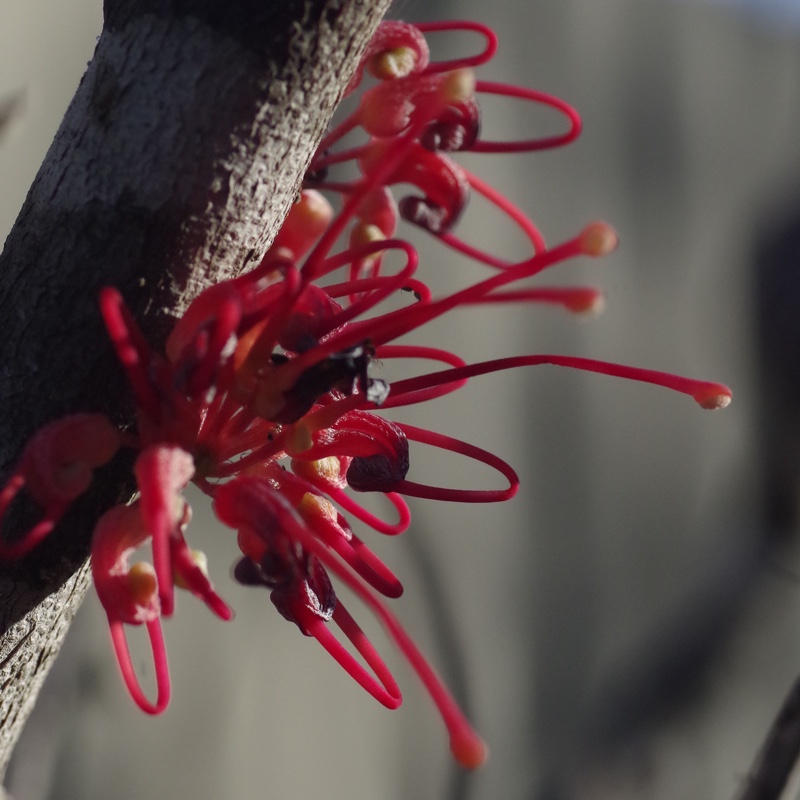
Hakea orthorrhyncha
Bird Beak Hakea
Hakea are evergreen trees and shrubs. The leaves are leathery, often needle-like. The flowers, which appear in clusters, are small and tubular, and are followed by woody seed-pods. Hakea orthorrhyncha - 'Bird Beak Hakea - bears bright red flowers that appear in clusters on older growth from early Winter to early Spring. Woody, beaked fruits follow the flowers, and are about 40 mm. long, 20 mm. wide.
Contributed by @ranster
-
Full sun
-
Very little water
-
Frost Hardy: 23F (-5°C)
-
Light and free draining
Common name
Bird Beak Hakea
Latin name
Hakea orthorrhyncha
type
Shrub
family
Proteaceae
ph
5.5 - 7.3 Acid - Neutral
Plant & bloom calendar
-
Best time to plant
-
When the plant will bloom
full grown dimensions
 2.50 M
3.00 M
2.50 M
3.00 M
Hakea orthorrhyncha
Hakea are evergreen trees and shrubs. The leaves are leathery, often needle-like. The flowers, which appear in clusters, are small and tubular, and are followed by woody seed-pods. Hakea orthorrhyncha - 'Bird Beak Hakea - bears bright red flowers that appear in clusters on older growth from early Winter to early Spring. Woody, beaked fruits follow the flowers, and are about 40 mm. long, 20 mm. wide.
Flowering
From Mid Autumn TO Early Winter
The flowers appear on old wood - often on bare wood - in Autumn to early Winter
Planting
From Early Spring TO Late Spring
Plant in a sunny, or partially sunny, site in free-draining soil - preferably sandy soil - with an acid to neutral ph.
Propagating by cuttings
From Late Summer TO Early Autumn
Take semi- ripe cuttings from this season's growth in Autumn. Cut neatly, just below a leaf node, a 5" approx. piece of a healthy shoot that has soft growth at the tip. pinch out the growing tip, and cut off the bottom leaves. Dip the bottom of the cutting in hormone rooting powder, and carefully place in a pot of cutting compost with the leaves just above the level of the compost. Water, label, cover with a polythene bag, and place in a warm, bright place, out of direct sunlight. Take the polythene bag off periodically for a while for ventilation (at least twice a week)








